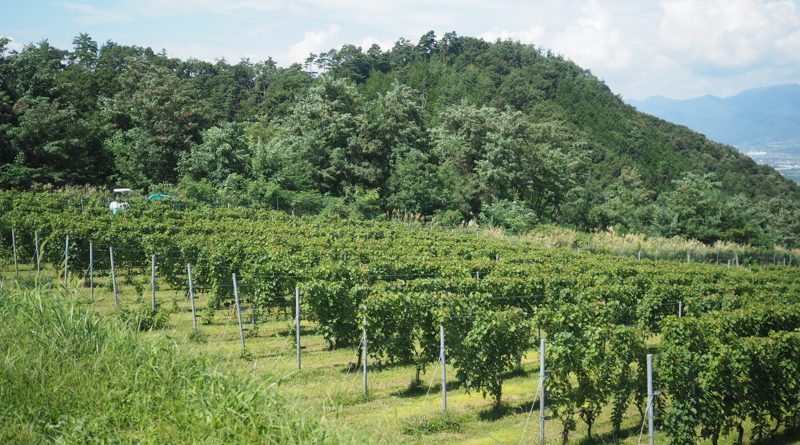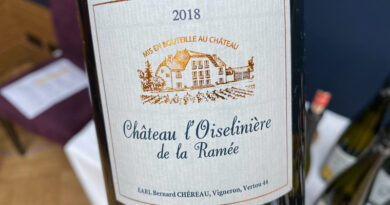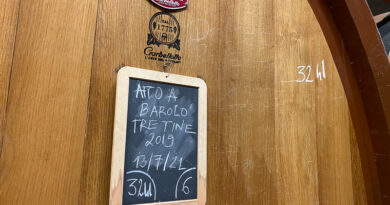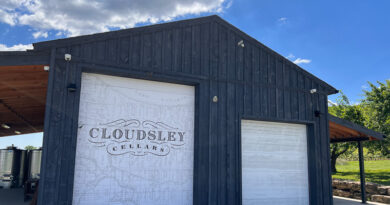Visiting Château Mercian, one of Japan’s leading producers
Jamie Goode travels to the Nagano and Yamanashi wine regions of Japan to see the work that one of the country’s top wineries, Château Mercian, is doing there. He found some meticulous viticulture amid challenging environmental conditions, and some very smart cool-climate wines.
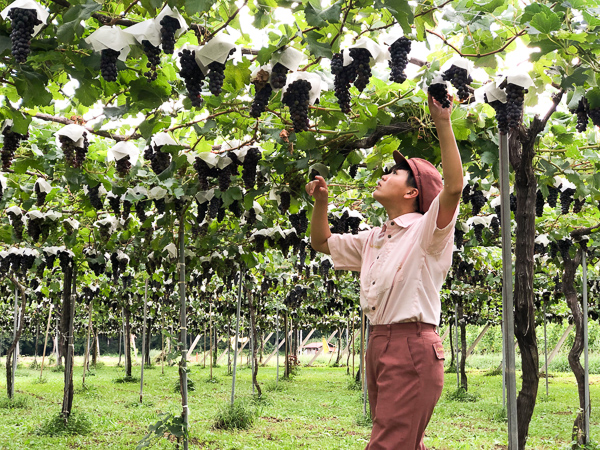
I’ve been following Japan’s wine scene quite closely over the last few years, and on the last trip I visited what’s probably the most important producer in the country, Mercian, who are owned by drinks company Kirin.
On global scale, they aren’t large, but in Japanese terms they are significant, as is their emphasis on making high-end wines. Domestic (that is wine made from Japanese-grown grapes) wine production in the country stands around 22 million bottles a year with roughly 300 wineries. Of these, Mercian is one of the largest and most significant, making some 500 000 bottles a year. They are currently still growing.
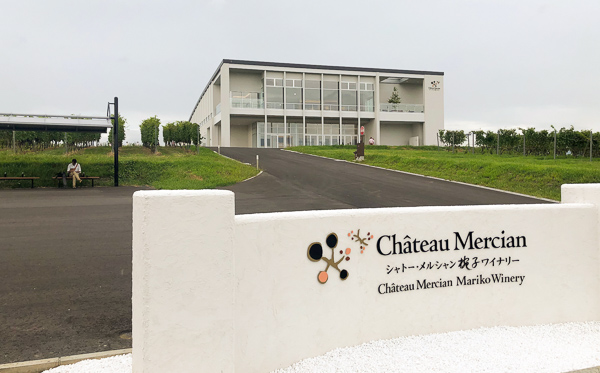
They now have three wineries: the largest is the Katsunuma winery, in Yamanashi, and then two in Nagano: Kikyogahara and Mariko.
Modern Japanese wine trace its roots back to 1877, when the Dainihon Yamanashi Wine Company was founded. The newly formed company realised that they needed to develop some expertise so they sent two promising young employees, Masanari Takano and Ryuken Tsuchiya, to France, where despite their language issues (neither spoke French), they learned all about viticulture and winemaking. But once back in Japan, severe viticultural challenges led to the closure of the company in 1886. Kotaro Miyazaki, one of the shareholders took over the equipment and began operations again, with the help of Ryuken Tsuchiya and his younger brother Yasuyuki, and the new operation was named Kaisan Winery. Miyazaki was instrumental in establishing viticulture in Katsunama, which is now a significant wine area, and where Mercian began.
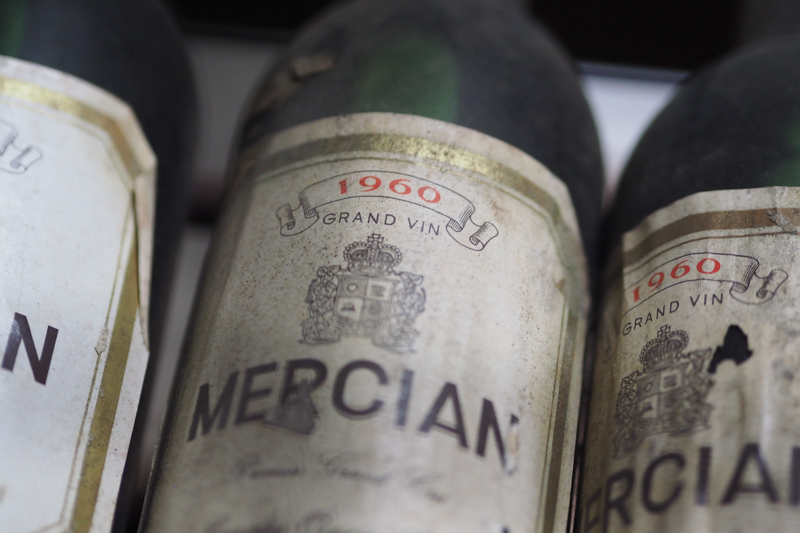
The Mercian brand itself dates back to 1949. Famously, their 1962 white won a gold medal in an international competition in 1966. At the time the Japanese wine industry focused almost exclusively on hybrids. But Mercian started working with Merlot in Kikyogahara, which they first planted in 1976, and Cabernet Sauvignon was planted in 1984 in the spectacular Jyonohira vineyard, which was one of the first vineyards in Japan with vertical shoot positioning as opposed to a pergola system.
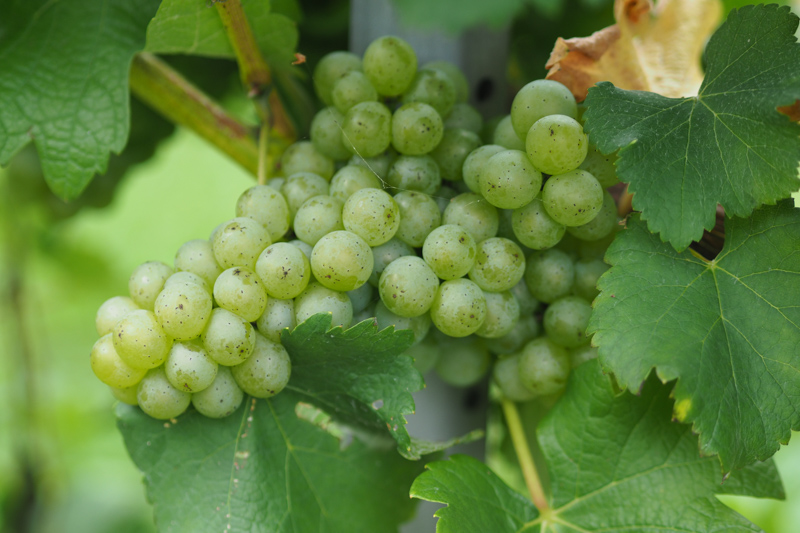
In 2003 they began working with the late Dr Takatoshi Tominaga. Tominaga and the late Denis Dubourdieu were the first to discover the aromatic potential of polyfunctional thiols such as 3MH, 3MHA and 4MMP in wine (these are famously important in Sauvignon Blanc aroma, and also botrytised wines). Tominaga helped Mercian emphasize these aromatic polyfunctional thiols in Koshu wines. The result was the Koshu Kiiroka wine. Mercian also had consultancy advice from Paul Pontallier of Château Margaux, and the result was a step-up in quality of the single-vineyard wines Kikyogahara, Jyonohira and Mariko.
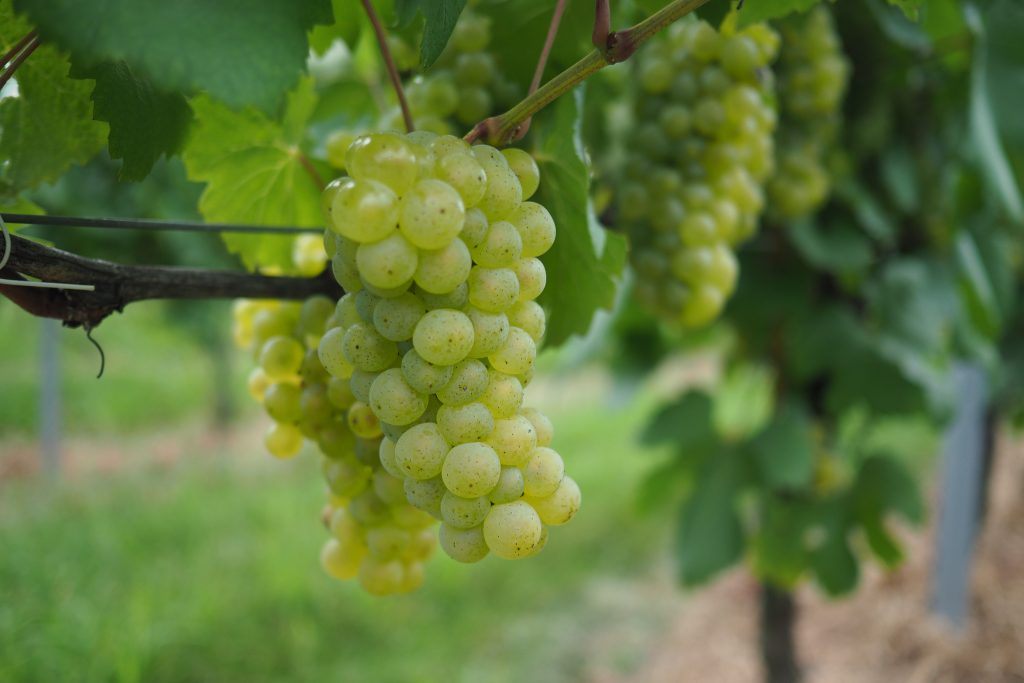
I began my visit at the Mariko Vineyard in Nagano, where Mercian have just opened a beautiful new winery, kitted out with all the latest equipment. They have 22 hectares of vines here and are planting 6 more. There are a range of varieties grown here, with heavy clay soils throughout the property. It’s early September and vintage will be quite late: the reds are just going through veraison. We are at altitude, with the high point on the vineyard 650 metres.
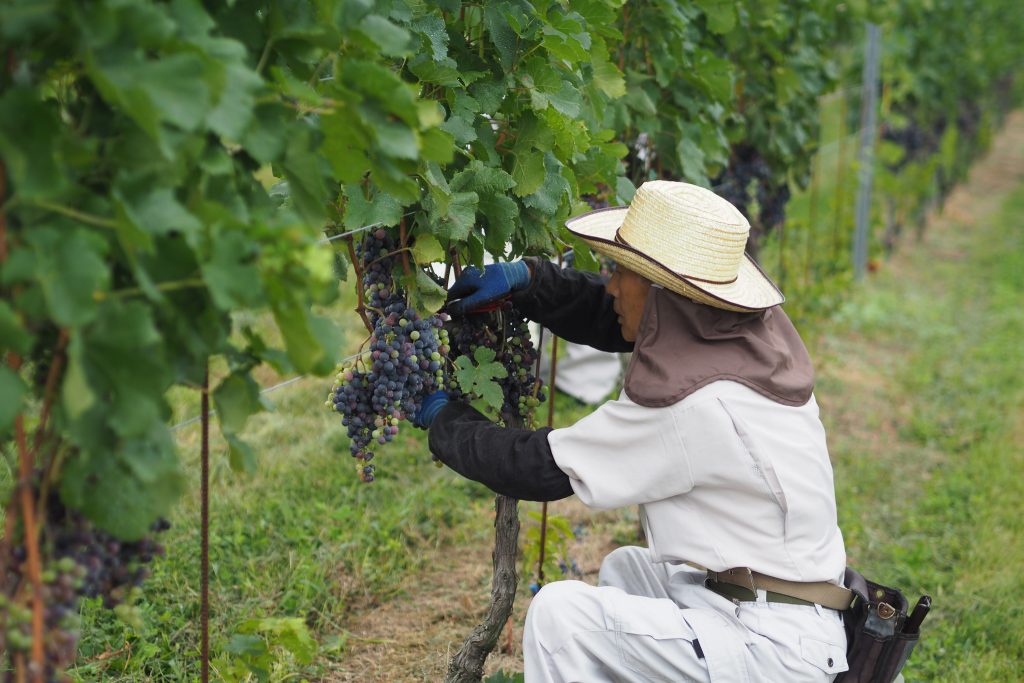
Merlot is going through veraison quite late this year (it’s the beginning of September). The crew are dropping some of the bunches (or parts of some of the bunches) to the floor. These vines are 12 years old.
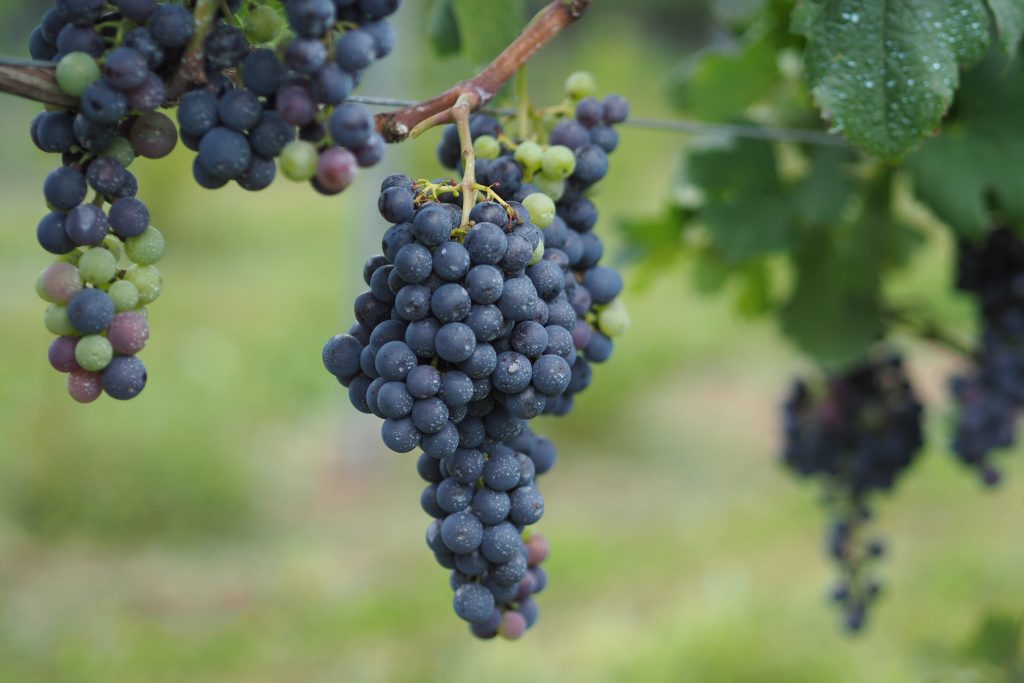
They have two blocks of Sauvignon Blanc. The one we had a look at is grown for aroma, while the other is grown for flavour. The vines are 16 years old.
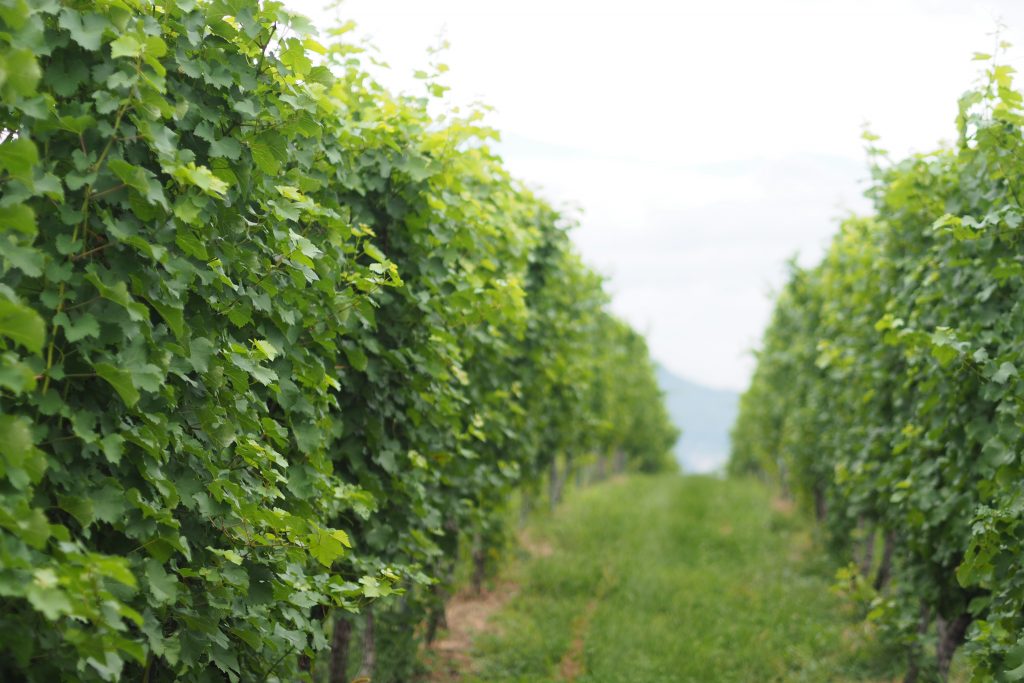
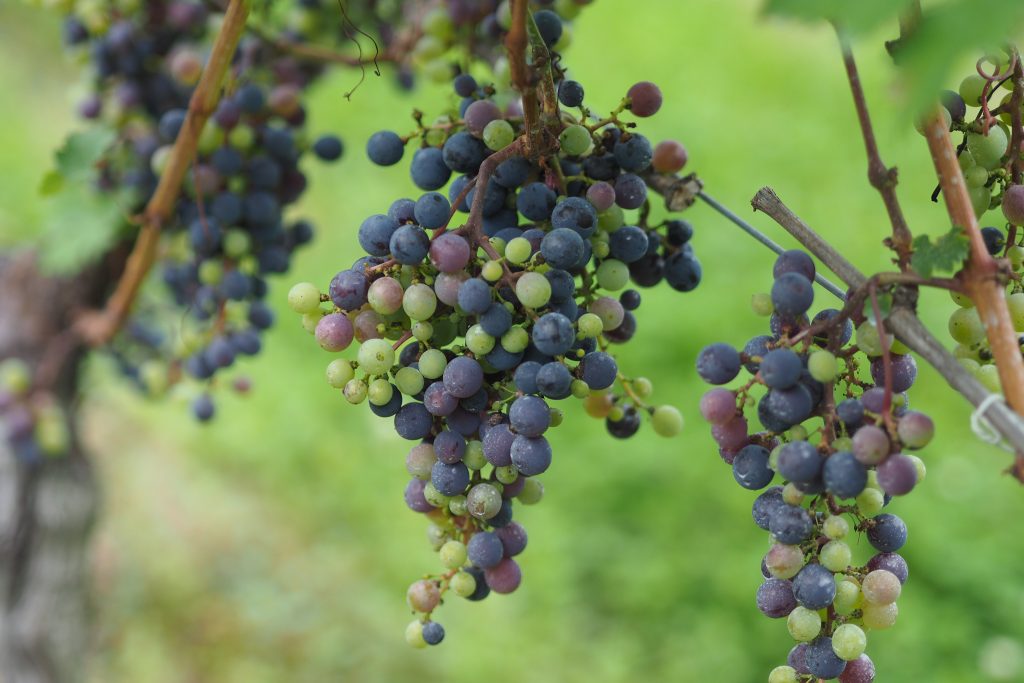
The Cabernet Sauvignon is also 16 years old, and the vines are ungrafted. The bunches are quite open with small berries, and this usually yields 5 tons/ha and is harvested November.
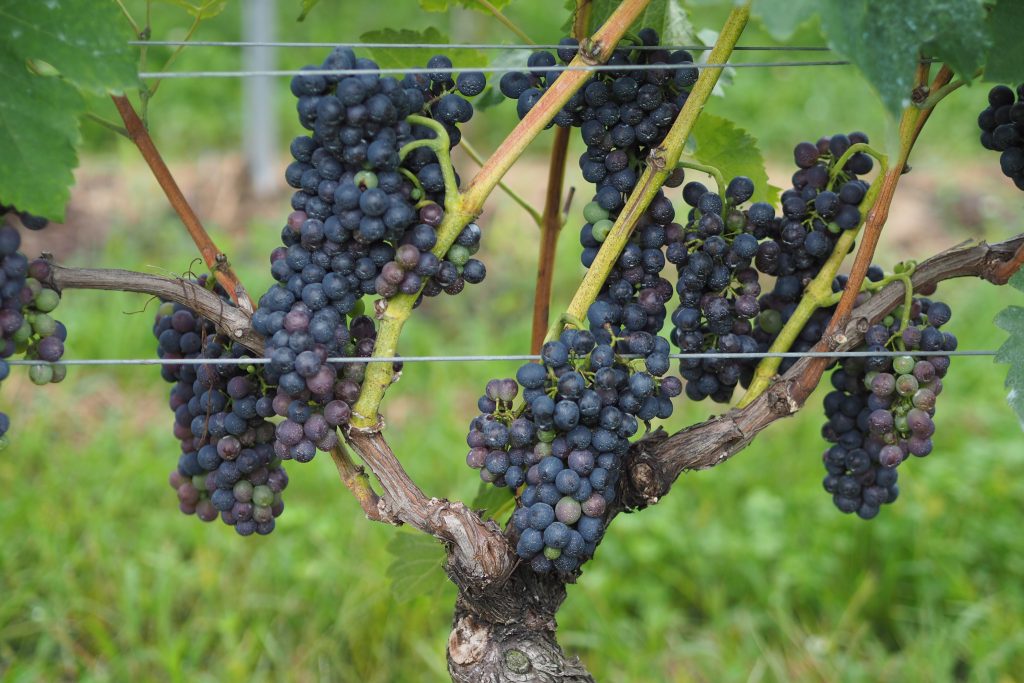
Syrah is one of the stars here. The 15 year old vines yield grapes that make a really peppery expression of this variety. This was one of my favourite Japanese wines of all: a real Rotundone bomb.
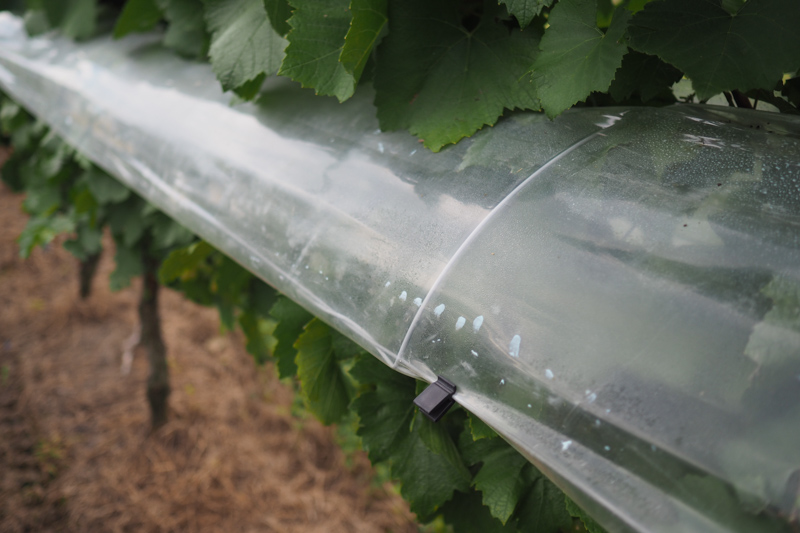
They are expecting to put around 100 tons through the winery this vintage. Overall, through their three wineries they will do around 600 tons, and 80% of production is in the Katsunuma winery in Yamanashi. They have 50 hectares overall in Yamanashi, and the remaining 40 hectares are mostly in Nagano, but also in Akita and Fukushima.
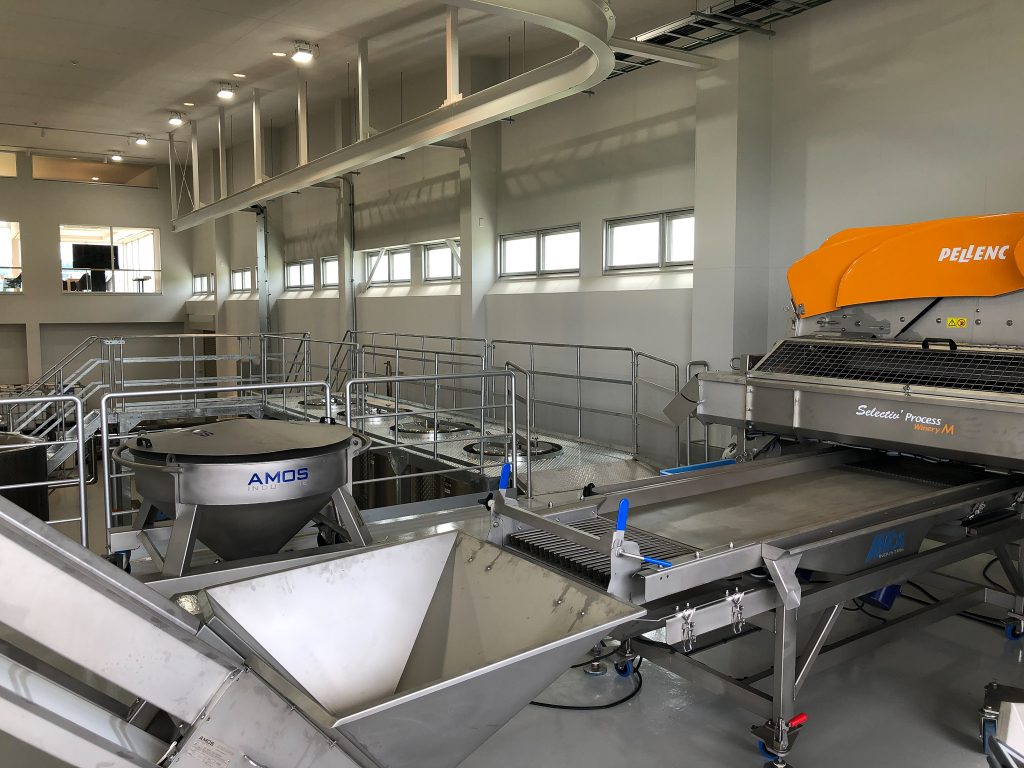
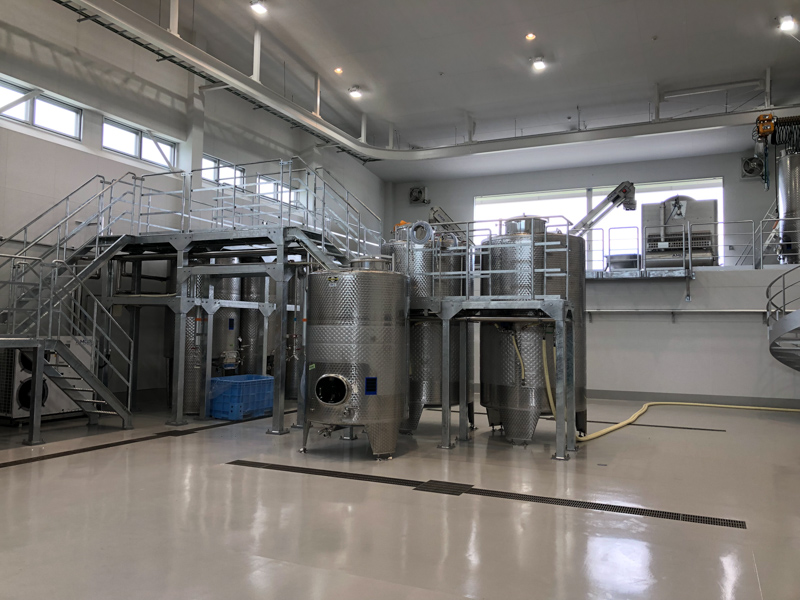
The varietal breakdown at Mercian
- Koshu 150 tons
- Merlot 120 tons
- Chard 130 tons
- Muscat BaileyA 100 tons
- Plus others in smaller quantities
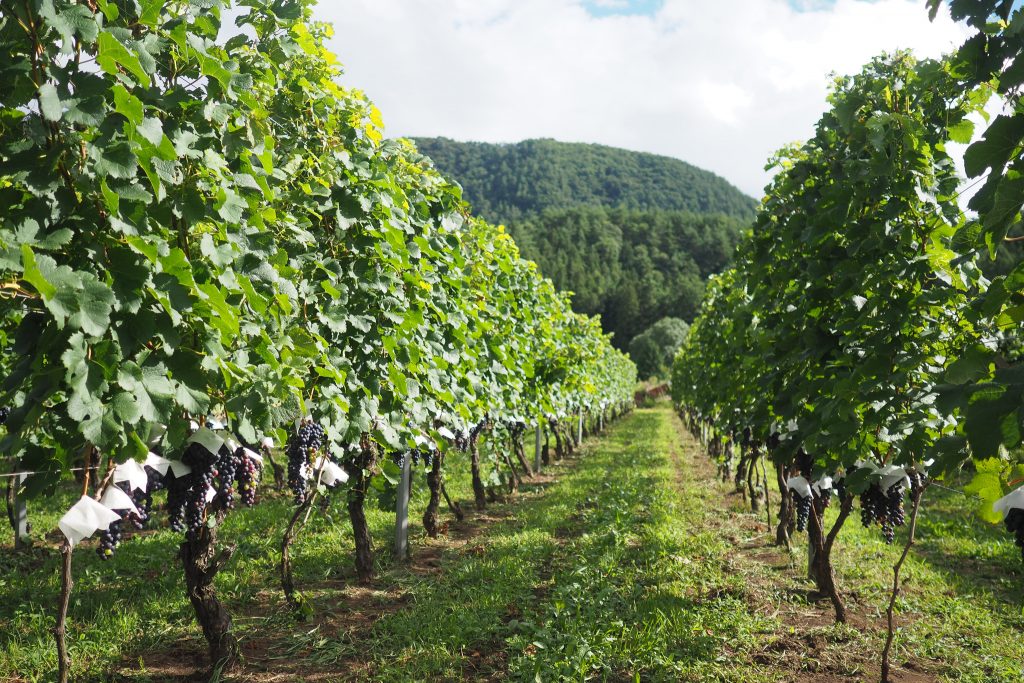
The next stop is in Kikyogahara, also in Nagano, where they make a high-end Merlot. We looked at two neighbouring vineyards, one of which is the vertical shoot positioned vineyard that makes the single-vineyard wine from here. The other is a more traditional pergola vineyard. The pergola gives high yields of around 100 hectolitres a hectare. It takes a while to get to this level (5 years or so), and the vineyard has to be replanted at around 20 years of age. Pergolas are still the main way of growing vineyards in Japan, especially for the hybrid varieties Koshu and Muscat Bailey A, which don’t work very well with a vertical shoot position system: they just become too vigorous.
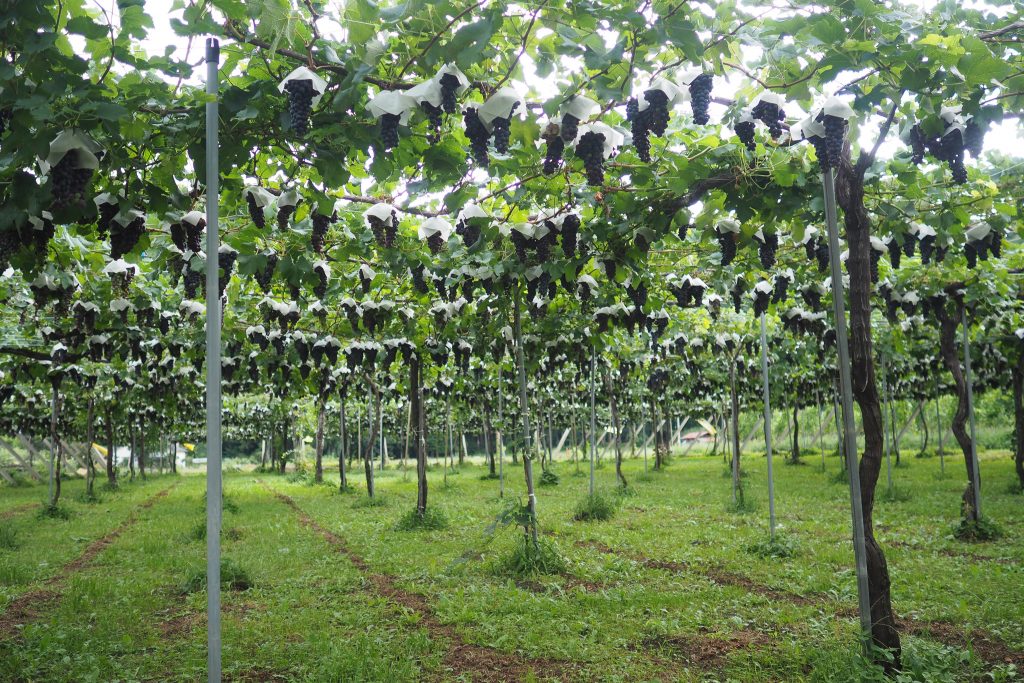
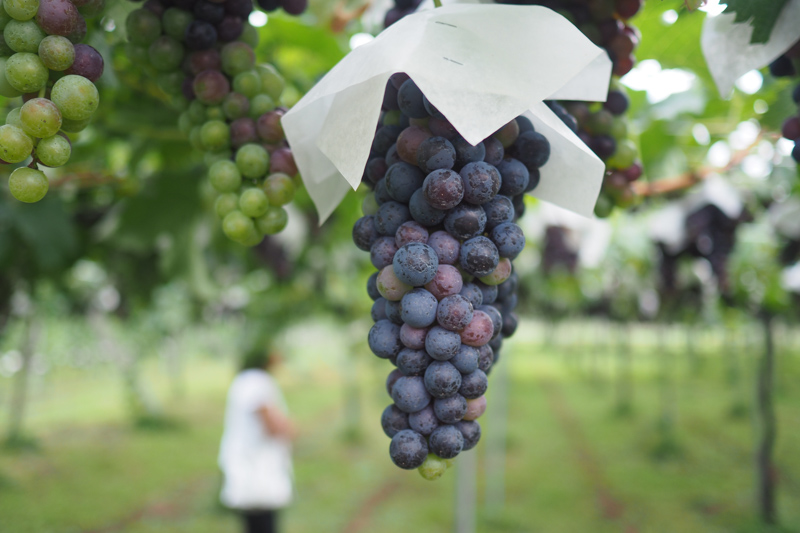
One of the main diseases here is called ripe rot, which is a disease I’ve not seen before. It’s also known as anthrachnose fruit rot. Affected grapes have an orange coloured fungus growing on them.
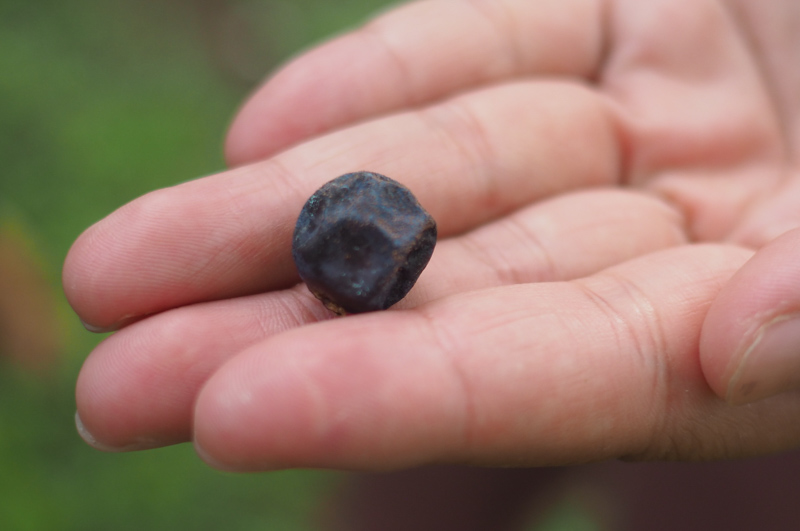
We visited the freshly renovated Kikyogahara winery (In Shiojiri, Nagano prefecture), which dates back to the 1930s, maintaining the historic building. It’s a small ‘garage’ winery, with top kit for making small volumes of high-end wines.
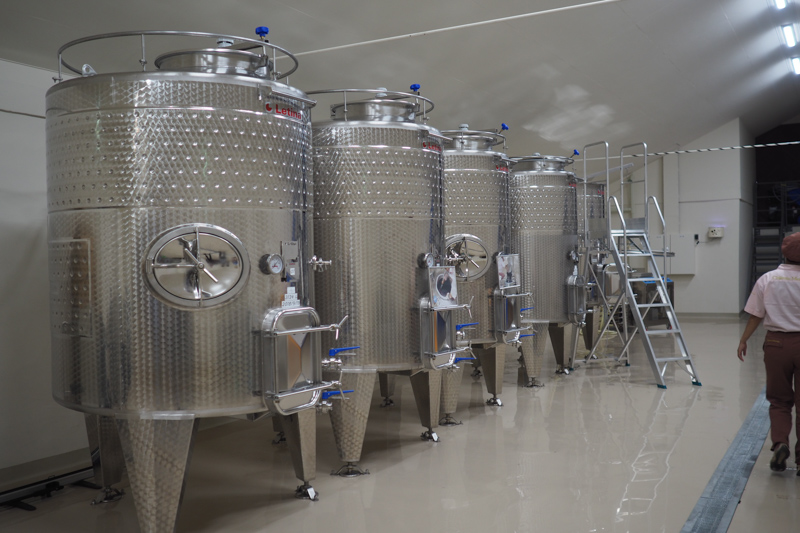
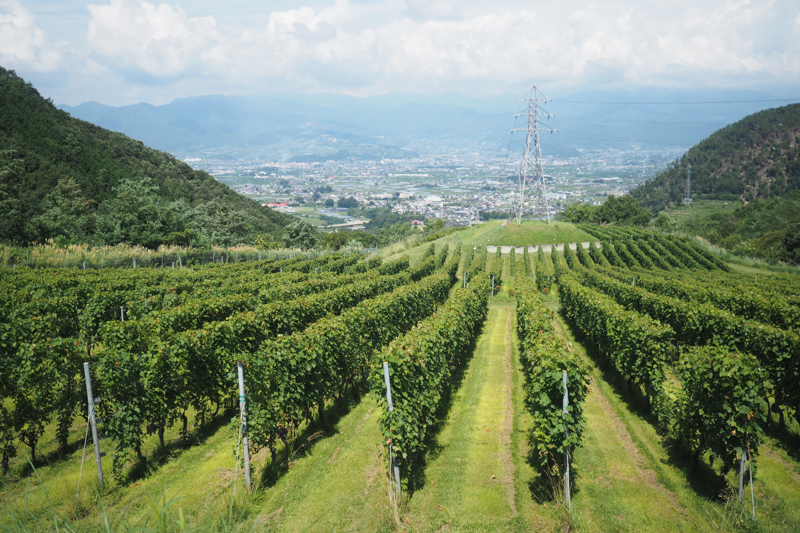
The Jyonohira vineyard was the next stop. This high-altitude vineyard (600 metres) looks down to the town of Katsunuma in the Yamanashi prefecture. The site, with volcanic ash and clay soils, is reasonably vigorous. They have trialled different canopy heights: 2.5 m, 2 m and 1.8 m, and all give good results.
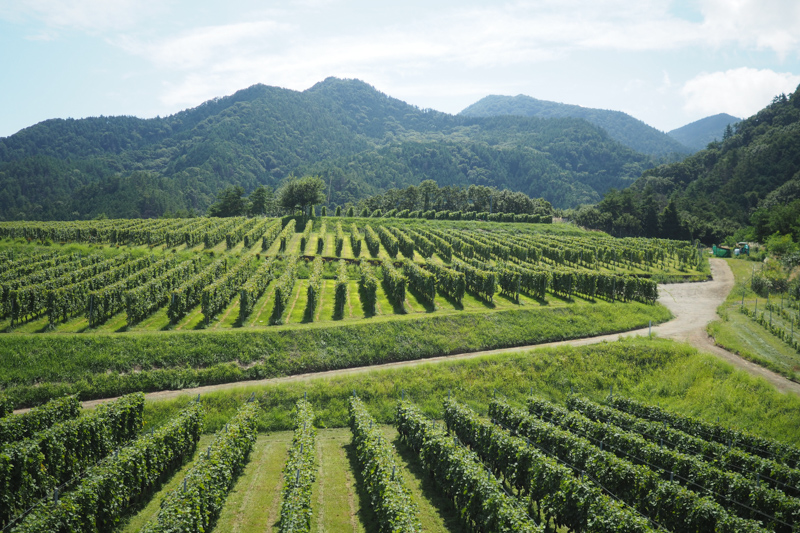
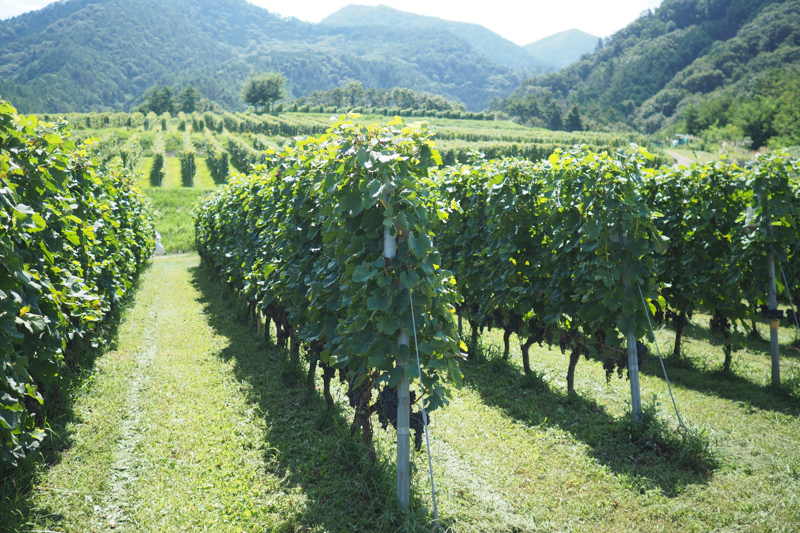
The vineyard is just a hectare, but some new plantings have been made. It is surrounded by woods, and they stopped using herbicides here three years ago. First planted in 1984, this is one of the first vineyards in the country with a cane-pruned VSP trellis. Normally the Merlot is harvested here in mid-October and the Cabernet Sauvignon in early November, but this is a late year and so they have dropped more crop than usual so that the vine has a chance to get the grapes ripe.
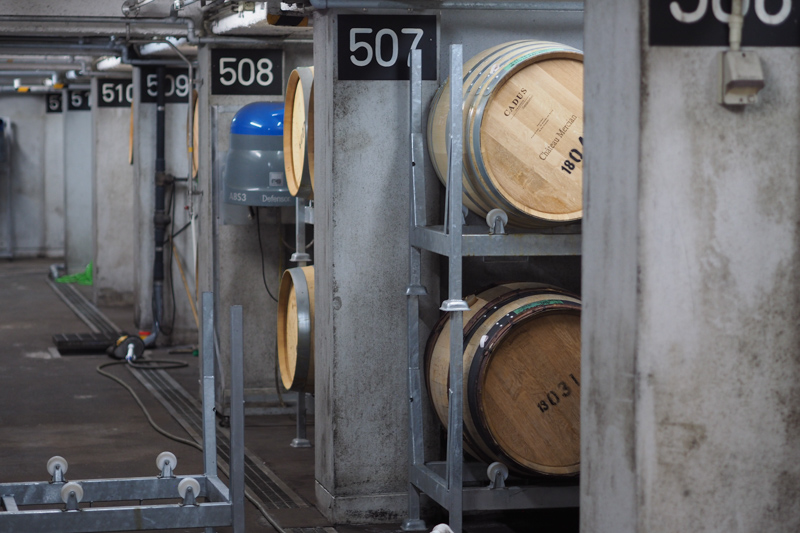
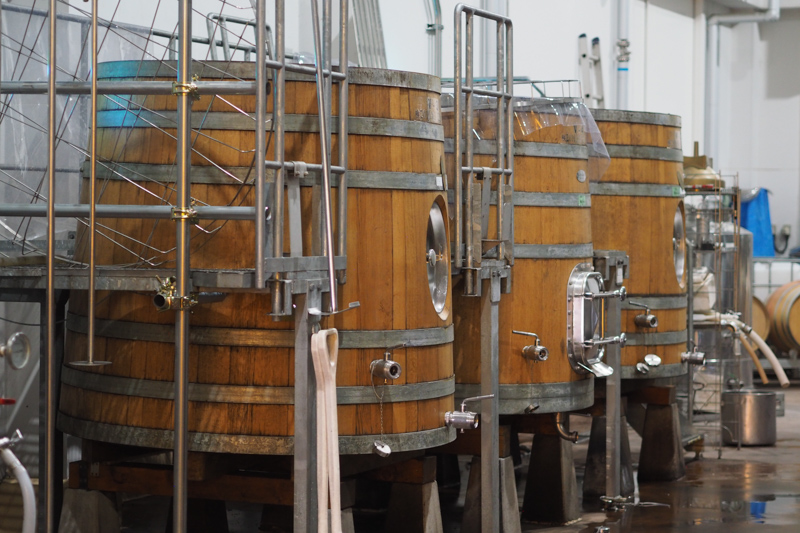
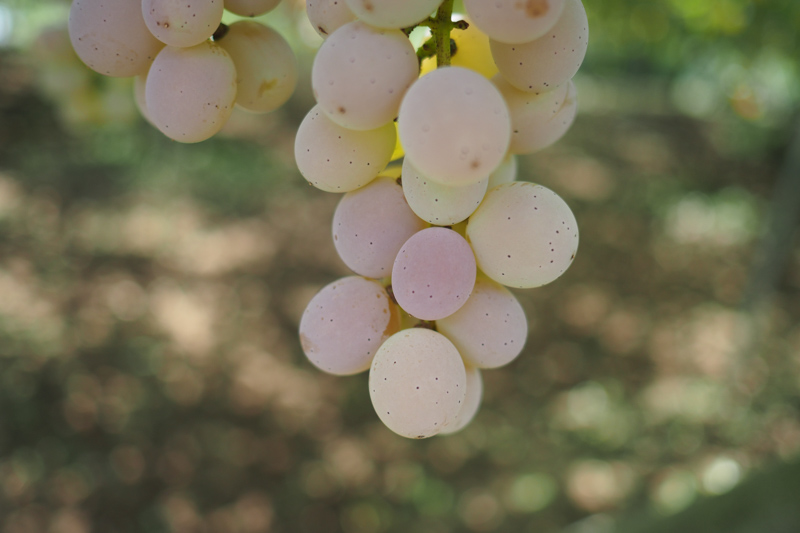
Our final vineyard visit was also in Yamanashi. We stopped at the main winery where they were processing some Bijou Noir grapes (it’s a hybrid). Then we went to the vineyard that makes their Kiiroka Koshu owned by Mr Ueno, in the Iwade district of Yamanashi. This is pergola-trained and grows Koshu, an ancient hybrid variety with about 25% wild (non-vinifera) grape genetics in it, as well as some Muscat Bailey A. The bunches were just beginning to pick up their pale pink coloration.
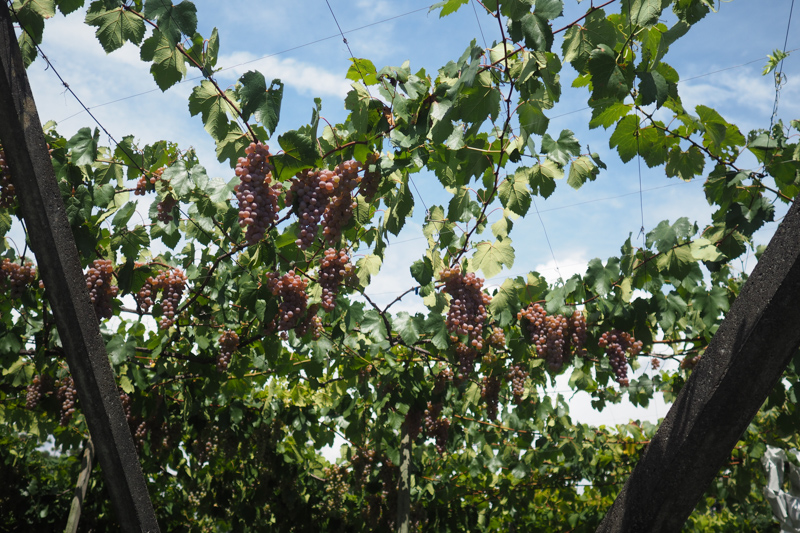
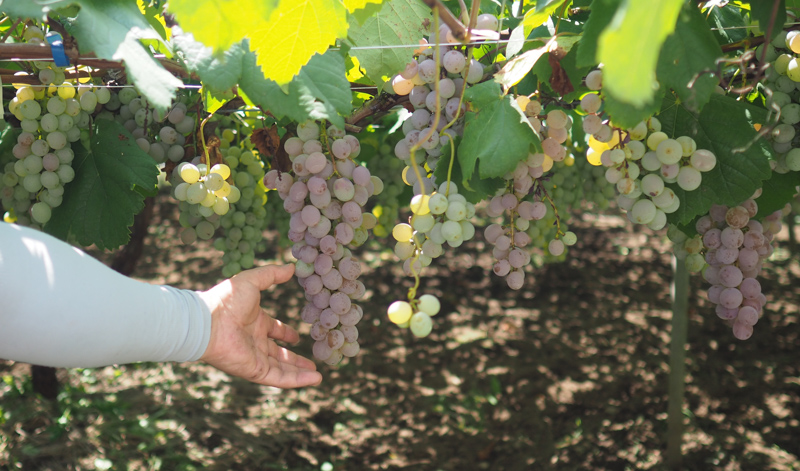
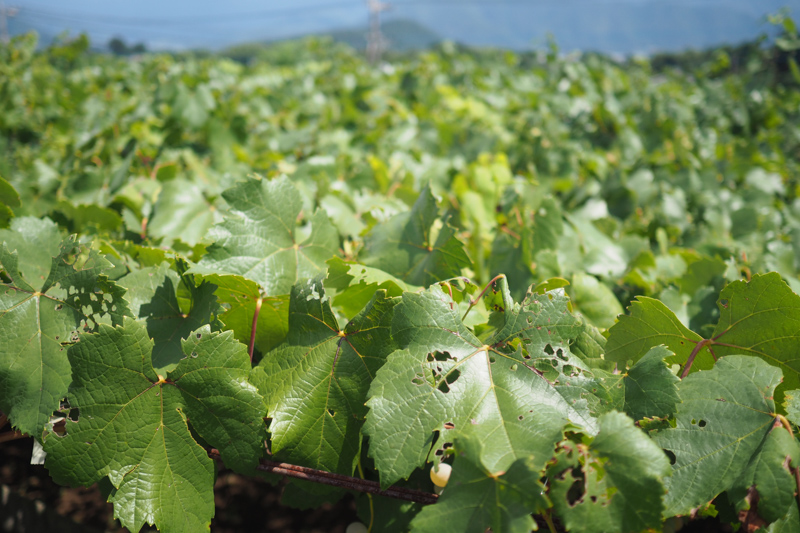
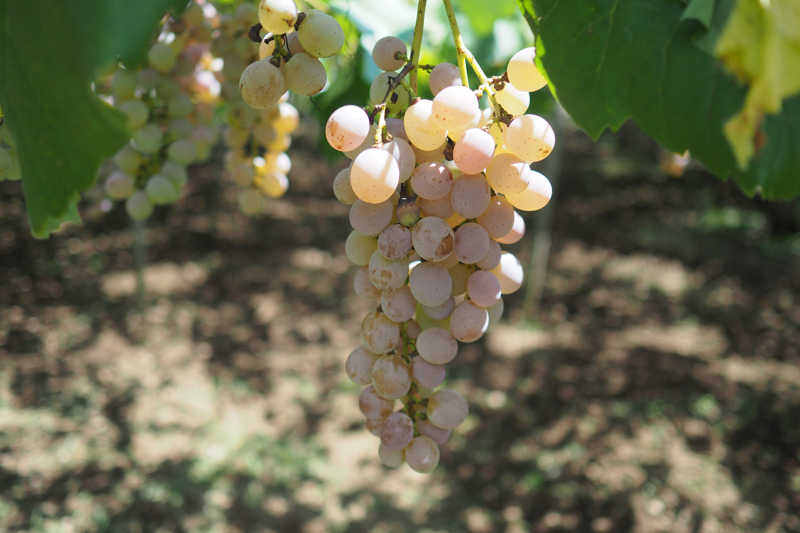
THE WINES
This tasting took place at Mercian’s new winery in the Mariko Vineyard, Nagano, and was hosted by chief winemaker Mitsuhiro Anzo.
Château Mercian Iwade Koshu Kiiroka Cuvée Ueno 2017 Yamanashi, Japan
They are looking for thiol character in this Koshu. Grown on pergola, harvested a little early in the middle of September in order to preserve aromas. Very aromatic with floral notes and a touch of elderflower. Keen acidity on the palate with nice yellow plum and peach hints, with a bright lemony finish. Subtle green hints, too. Strong acidity drives this wine. 91/100
Château Mercian Yamanashi Koshu 2018 Yamanashi, Japan
This is from a number of vineyards. Aged on lees for six months. Lovely fruit expression here with pear and citrus, as well as some rounded texture on the mid palate. Has nice delicacy with lemon notes on the finish. Shows purity and nice poise. 90/100
Château Mercian Iwasaki Koshu 2018 Yamanashi, Japan
Fermented and aged in oak barrels. The fresh fruitiness of the Koshu is joined here with notes of vanilla and cream from the barrel. Has freshness coupled with a savoury, mealy, creamy character. Food friendly. 88/100
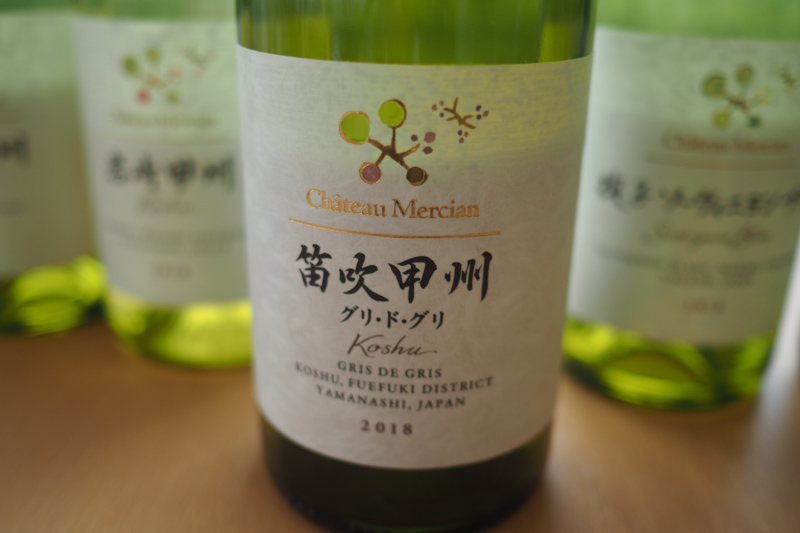
Château Mercian Fuefuki Koshu Gris de Gris 2018 Yamanashi, Japan
Skin fermented (four weeks) Koshu with a pale orange/pink colour. Intriguing nose of cream, strawberry, apple and tea. The palate has a nice savoury dimension with a bit of structure. There’s some apple and pear fruit, but also a nutty, spicy savouriness. Really distinctive. 91/100
Château Mercian Mariko Sauvignon Blanc 2018 Nagano, Japan
Block 3 is grown for aroma and block 7 for flavour, and the two are later combined. Lovely aromatics here: has some elderflower and passionfruit, together with bright citrus notes and a hint of green. The palate is vivid and bright with high acidity and a lovely lemony vigour. Has nice green hints. A really impressive, bright, mineral style of Sauvignon with lovely intensity. 92/100
Château Mercian Hokushin Chardonnay Unwooded 2017 Nagano, Japan
From the right (gravel soils) and left (clay soils) of the Chikuma River in Hokushin, in the north of Nagano. No malolactic in order to preserve the acidity. Very reduced with a strong mineral matchstick character on the nose. The palate is lean, lemony and quite spicy with more of the reductive notes. A bit smoky. Tight and intriguing. I quite like the reduction, but it is extreme. 90/100
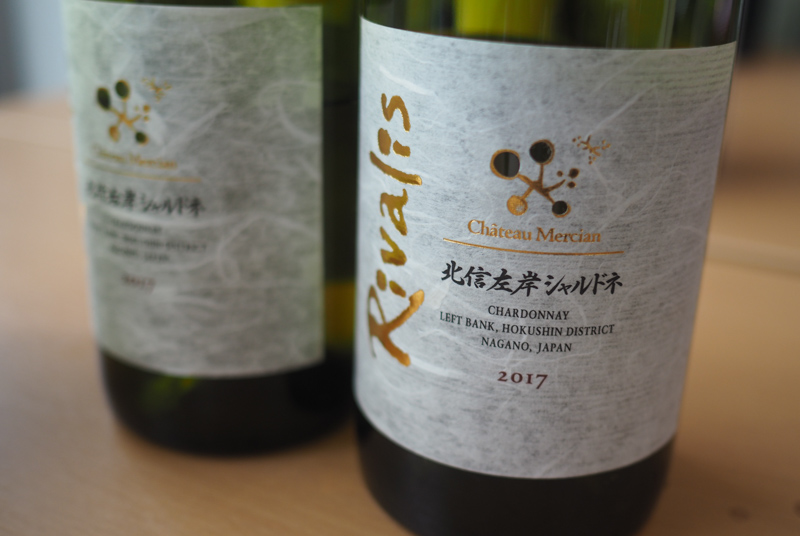
Château Mercian Hokushin Right Bank Chardonnay Rivalis 2017 Nagano, Japan
From gravelly soils. Barrel fermentation, partial malolactic. There’s a subtle creaminess here underlying the lemon, pear and apple character. Notes of almond and spice, with lovely textured, layered fruit. Lovely detail on the finish. 91/100
Château Mercian Hokushin Left Bank Chardonnay Rivalis 2017 Nagano, Japan
Clay soils, barrel fermentation. This has brightness with good acidity and lovely citrus and pear fruit. There’s just a touch of nut, spice and vanilla from the oak, which is well integrated. Lovely crystalline character to the fruit here. Very stylish. 93/100
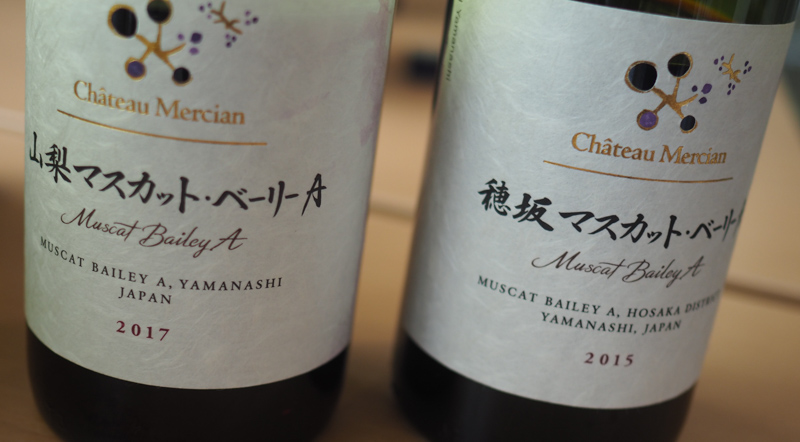
Château Mercian Yamanashi Muscat Bailey A 2017 Yamanashi, Japan
A hybrid created in 1902. Amazing aromatics here with strawberry and cherries and a bit of jelly. The palate is dry and fruity. Very open with nice brightness and good fresh acidity, showing some herbal hints. Juicy and delicious. 89/100
Château Mercian Hosaka Muscat Bailey A 2015 Yamanashi, Japan
This comes from the Hosaka district in the northwest of the Kofu basin at altitude. This spends 24 months in barrel to try to shed some of the more over the top aromas. Shows a slightly sappy edge to the refined cherry and raspberry fruit, with a subtle savouriness and nice acidity. Very fresh finish. It’s actually quite Pinot-like. Very stylish. 91/100
Château Mercian Mariko Merlot 2015 Nagano, Japan
This is really nice. Has a slight green edge to the bright cherry and plum fruit. Gravelly and chalky with nice structure and freshness. Benchmark Merlot with lovely balance and purity, and good varietal character. Fresh and nicely structured, with a bit of grip. 92/100
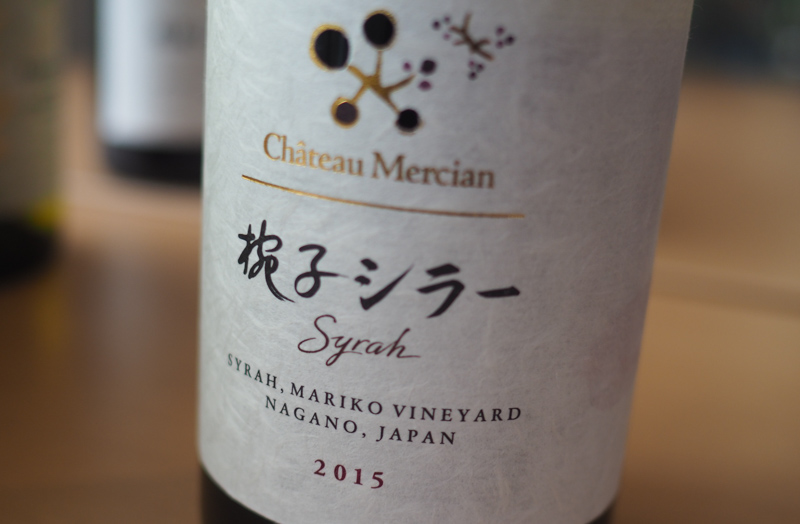
Château Mercian Mariko Syrah 2015 Nagano, Japan
This is a rotundone bomb: it’s just so bright and peppery. Lovely red and black cherry fruit here. Supple, with good acidity and structure, and such freshness and precision. This is stylish cool-climate Syrah of immense appeal. Lean, taut and just so peppery. 94/100
Château Mercian Kikyogahara Merlot 2014 Nagano, Japan
Gravelly soils at 740 m, some VSP and some pergola. First vintage of this wine was 1985. Aromatic nose, slightly floral, with some nice sappy green hints. The palate is fresh and supple with a nice savoury, gravelly edge to the sweet cherry and plum fruit, with a twist of blackcurrant and some nice herbal notes. Very refined and stylish, with good structure and acidity. 93/100
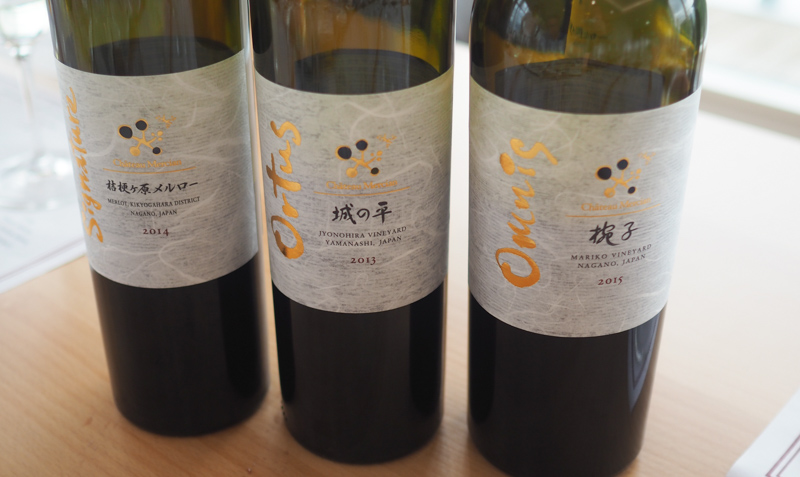
Château Mercian Kikyogahara Merlot Signature 2014 Nagano, Japan
Gravelly soils at 740 m. This is serious. Structured and focused, with some sweet blackcurrant and black cherry fruit, supported by grippy tannins. Has some spicy complexity, and it’s a refined, structured, slightly backward wine with incredible potential. Tightwound and intense. Gravelly and dark. 94/100
Château Mercian Jyonohira 2014 Yamanashi, Japan
Jyonohira is in the Katsunuma district, planted in 1984 to Cabernet Sauvignon and Merlot, with clay soils at 550-600 m. 67% Cabernet Sauvignon, 33% Merlot. Savoury, quite taut and gravelly with some restrained blackcurrant and plum fruit. Balanced and restrained with midweight personality and a bit of grip on the finish. 90/100
Château Mercian Jyonohira Ortus 2013 Yamanashi, Japan
62% Cabernet Sauvignon, 20% Merlot, 18% Cabernet Franc. Supple and quite elegant in style with a savoury, gravelly edge to the blackcurrant and cherry fruit. Has a really nice savoury restraint, but also good concentration. A little flesh here, but not at all fat. Shows lovely balance. 93/100
Château Mercian Mariko Omnis 2015 Nagano, Japan
42% Merlot, 40% Cabernet Franc, 18% Cabernet Sauvignon, 18 months in barrel (40% new). 650 m altitude. This is dense, concentrated and structured with robust blackcurrant and blackberry fruit, as well as some spicy, cedary oak notes. There’s a lot of fruit here, but the oak plays a useful supporting role without getting in the way. Firm tannins on the finish. 93/100
Find these wines with wine-searcher.com
UK agent: Boutinot
Conflicts of interest: Château Mercian paid for my flights, accommodation and meals on this trip. While I was in Japan I was also paid to do two seminars for the trade and winemakers.

